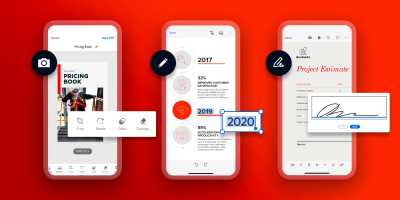The Business Insider reports that 89% of the users use mobile banking apps. In comparison, the other 70% rely on the primary means of accessing their accounts.
Banks have benefited from this trend. People are always using their smartphones wherever they go and want to access their money wherever they are.
Nowadays, mobile apps are widespread. They can provide a better user experience than opening the bank’s website on a mobile device.
A study by Positive Technologies reveals that half of the mobile banking apps are vulnerable to fraud and theft. The main reason is inappropriate security. The analysis shows that mobile banking apps have a security flaw that hackers can exploit to access sensitive data and commit fraud.
The study tested 14 banking apps available on Android and iOS that comprise more than 500,000 downloads. The results are shocking for the company and the users as well. Every app contained vulnerabilities, and three flaws were common in both the apps. These include.
- No protection against code injection and repackaging
- A lack of obfuscation
- Code that has names of classes and methods
These discovered security risks put business clients and users’ at significant risk. The hacker doesn’t need to gain access to the banking app’s server to do the damage.
Here, we’re going to discuss tips to boost the security of mobile banking apps. But, before, let’s first discuss the problems associated with mobile banking apps.
The Issues of Mobile Banking Applications
Security flaws in mobile apps are exposing organizations and their clients to danger. Uncovered source code, data leakage, and access to back-end administrations using APIs are concerns with banking apps. The following mentioned below are some more issues with mobile applications.
Third-Party Apps
Users like their mobile phone and tablet apps, yet these apps originate from outside security practices. There are certain apps you download from the third-party apps on your phone. They are unsecured and contain malware, and become the reason for hacking your banking app.
Breaches through Public Wi-Fi work
Mobile devices allow you to connect to a different type of network, including Wi-Fi networks. You feel like checking your total balance or making some transactions while drinking coffee at a coffee shop. But, before you log into your account, ensure that you’re not connected to a public network.
The main con of using a public Wi-Fi network while using mobile banking is that such data is unencrypted and unsecured. It might leave you open to man-in-the-middle attacks. Such attacks occur when hackers exploit the free network’s security flaws to invade data that pass among you and the website you visit. It includes robbing account details, banking logins, and credit card numbers. They might also hack into these networks to install malware on your device.
Fake Banking Apps
The use of fake banking apps is another method used by hackers to access your mobile banking data. These apps pretend to look like the official mobile banking apps to fool the customers into downloading them. From there, they’ll steal your banking logins and credit card details.
Phishing Scams
Phishing scams include someone connecting you through emails, SMS, phone, or social media posting. They pretend to be a trusted company or institution to get your banking information, passwords, and usernames. The hacker might also ask you to give away your personal information or trick them into downloading a malicious link on your mobile device.
Lack of Phone Security
If you don’t have fingerprint detection or PIN code set up on your smartphone, then you’re keeping your banking data at risk. In case your phone gets misplaced, or stolen anyone can access the data. If you use a weak or easy-to-identify password for your bank account, it opens doors for hackers to invade your privacy.
Tips to Boost Mobile Banking App Security
When it comes to mobile security, it’s essential to stay vigilant against various attacks and scams. Below are some tips that might help you to enhance your protection against banking app attacks.
Avoid Following Suspicious Links
As mentioned earlier, hackers use phishing techniques to scam users. You should avoid following a banking link sent to you in an email or text message. All these links can lead you to a spoof or bogus website. Upon entering your information, you handed your data to cyber-criminals.
Thus, it’s always a great idea to navigate to a website. You can enter your bank’s web address into your smartphone and bookmark it. Doing so helps you prevent reaching and clicking on any infected website sent by the attackers.
Avoid Using Banking Apps on Public Networks
Nothing in this world comes for free. The public Wi-Fi connections are open but not secure at all. Most places that offer an open Wi-Fi hotspot warn the user not to share their sensitive information over their network.
If you want to access your account, do switch to some other network. If you’re using a smartphone or some other cellular device, turn off the Wi-Fi and switch to a reliable cellular network. It is because you never know who might be spying on your activities over the public network.
Use a Strong Password
We all know how crucial it is to use a secure password; it’s never too late to recall random and frequent security tips. Always use a strong password for your mobile device and your account as well. Make sure it’s not easy to crack and detect. Hackers use advanced tools and techniques to break your password. Set such a strong password that they fail in their mission. Start using reliable password managers like NordPass to create a strong password.
Use a VPN
Another best possible solution is to start using a VPN from a reliable service provider. A VPN hides your IP address and internet traffic, including your browsing activities.
With a VPN, you can transfer money while sitting at a café or any cinema without any fear. This tool makes the hackers and snooping eyes spy on your activities; thus, start using it from today if you don’t.
Use Official Banking Apps
Most banks offer official applications on smartphones and tablets. These apps are more secure in sending your account information either via email or text message. Most banks also go further to ensure that an app’s data is well encrypted.
Ensure that your bank sanctions the app before you download and install it. Most banks include a section on their websites to allow you to know about the official app. Once verified, the app is formal; it won’t be challenging to download and install it on your device.
Fingerprinting Methods
The introduction of fingerprinting devices adds yet another dimension to mobile banking apps. It gathers various sets of signals like browser, IP address, time of the day, type of device, location, and screen size.
Hire a mobile app development firm to build an app with a fingerprinting feature. The feature should be compatible with some other fingerprinting devices that protect you from banking app scams.
Behavior Analysis
With the evolution of technology, the marketplaces are full of custom-made software solutions. Behavior analysis is one such solution. It is so feature-packed that it’s not a big deal to examine activities, login locations, and users’ account activities.
The best thing about behavior analysis is that it flags abnormal behavior or location for further validation to avoid fraud. Further investigation can proceed via email or text messages, informing them of any suspicious activities. With this, you can also prevent mobile banking security vulnerabilities.
Parting Words
Mobile apps and other online platforms have made the banking process much easier for people. But, there is a more considerable risk of hackers stealing the data resulting in worse situations. Thus, the key here is to put in place online security measures with great responsibility.
The ways mentioned above can help you combat all the potential threats and vulnerabilities to make mobile banking apps safer and secure.












Comments